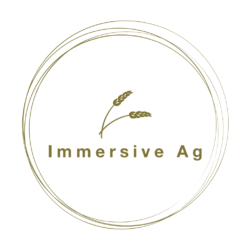Background
Sub-optimal productivity is commonly reported for the deep sands that make up 20 to 30% of the cropping soils in the low rainfall Victorian Mallee region. Diagnosis of local constraints have pointed to low fertility and the physical restriction of rooting depth as the most likely constraints to production on sands in the Victorian Mallee. To explore this further, a trial was established at Ouyen in 2017 to investigate the potential the interactions between crop water use, physical disturbance by rotary spading, and the incorporation of organic amendments.
Methods
Treatments
Six different types of organic matter were incorporated to a depth of 30 cm depth in 2017 using a one pass spade and sow operation (Table 1). Each organic amendment was applied at a rate which supplied 2.5 t/ha of carbon, but varied in carbon:nitrogen (C:N) ratio. Spaded organic matter treatments were also compared to spading only, spaded urea (supplying equivalent quantity of N as vetch hay) and a non-spaded control.
Management
The trial was sown to barley in 2017 with subsequent years rotating between wheat and barley. Each season the trial received DAP S Z (16:17:0:8; 0.5%Zn) @ 62.5 kg/ha at seeding and 47 kg/ha of Ammonium Sulphate and a foliar application of copper, zinc and manganese was applied during tillering.
| Treatment | Application Rate (t/ha) | C:N Ratio | Treatment N Input (kg/ha) |
| Spaded Vetch Hay | 6 | 16:1 | 156 |
| Spaded Oaten Hay | 5.9 | 72:1 | 35 |
| Spaded Vetch + Oat Hay | 3.3 + 2.7 | 25:1 | 102 |
| Spaded Chicken Litter | 6.8 | 16:1 | 218 |
| Spaded Compost | 15.8 | 10:1 | 252 |
| Urea | 0.34 | N/A | 156 |
| Spaded control | Nil | N/A | – |
| Non-spaded control | Nil | N/A | – |
Results
2020 Grain Yield
Here was a 0.75 t/ha increase in grain yield in 2020 between the non-spaded control and all other treatments which were spaded in 2017. There was no significant difference between spaded treatments, therefore there was no effect of organic matter in 2020.
Cumulative Yield Benefit (2017-2020)
Spading chicken litter compost in 2017 has provided increased grain yield by 3.4 t/ha relative to the on-spaded control. The effect of spading was 1.3 t/ha, therefore the long term yield benefit of the application of 6.8 t/ha chicken litter was 2.1 t/ha. The next most effective organic matter source was compost while on-farm organic matter sources such as vetch hay has provided not provided long term benefit over and above spading.
Acknowledgement
This virtual field day has been developed as part of the Mallee Sustainable Farming (MSF) project:
“Facilitating enhanced knowledge sharing of Mallee sustainable farming practices”
This project is supported by the Mallee Catchment Management Authority (CMA), through funding from the Australian Government’s National Landcare Program.
The research featured in this virtual field day was completed as part of the Grains Research and Development Corporation (GRDC) funded project:
• Increasing production on sandy soils in the low-medium rainfall areas of the southern region.
The trials are a collaboration between Frontier Farming Systems and Mallee Sustainable Farming, CSIRO and UniSA.






